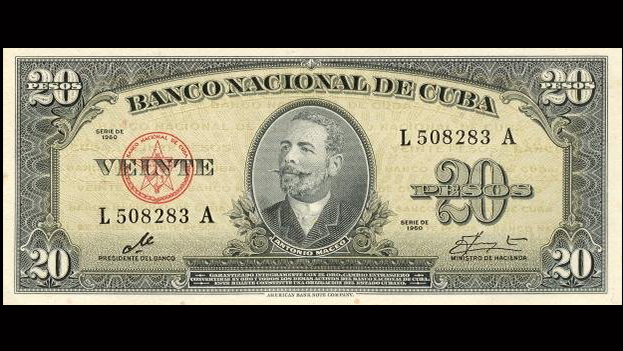
![]() 14ymedio, Elías Amor Bravo, Economist, 17 October 2022 — When Cuban Minister of Economy and Planning Gil decided, unilaterally, two months ago, to create an exchange rate of 1×120 for the dollar relative to the peso in an attempt to counteract the trend in the informal market, it was soon observed that the limits imposed on the availability of currencies, the geographical scope and access to purchase, limited to natural persons, would cause more problems than solutions, since this process eliminated the basic principle of convertibility of the foreign exchange market.
14ymedio, Elías Amor Bravo, Economist, 17 October 2022 — When Cuban Minister of Economy and Planning Gil decided, unilaterally, two months ago, to create an exchange rate of 1×120 for the dollar relative to the peso in an attempt to counteract the trend in the informal market, it was soon observed that the limits imposed on the availability of currencies, the geographical scope and access to purchase, limited to natural persons, would cause more problems than solutions, since this process eliminated the basic principle of convertibility of the foreign exchange market.
The minister’s decision, far from redirecting the situation, alerted the informal market, which began an unprecedented escalation of the dollar to around 200 pesos. After all the failures, the authorities now intend to redirect the situation and position the foreign exchange market between the national currency and the foreign currencies, preventing the Cuban economy from being dollarized. It won’t be easy. A very valuable amount of time has been lost, and now the cost of the adjustment will be higher.
The minister is determined to control all the currencies that enter the economy to channel them into the state coffers, and as they are fewer and fewer, decisions are increasingly risky. We remember that the stores that only accept payment in MLC (freely convertible currency) were adopted as a temporary and necessary solution to maintain socialism, and they are still there after more than two years. Everything that is proposed for a while ends up becoming permanent. And that’s how it goes.
On the other hand, there is concern among Cubans about what may happen with the peso exchange rate in the coming months. Those who have stocks in this currency don’t know whether to change now, at 190-200 per dollar, or to wait and see. The uncertainty is great, because the functioning of the informal market deviates from the conventional schemes that explain the trends in the value of currencies, and there is no anchor for the analysis. In any case, it doesn’t seem that the leaders are going to change the conditions of the environment that have led to this situation, so things will continue in the same way.
So, in the face of the current exchange rate crisis of the peso, which the authorities are unable to reverse, there are messages in the official press regarding the fact that the Cuban peso should be the center of the financial system, including an inclusive price system for all economic actors and a market that works with a certain level of wholesale and retail offers. So, why don’t they succeed?
The foreign exchange market is considered one of the essential elements in the recovery of the convertibility of the national currency, but it’s much more than a nominal exchange of currencies. In fact, the official thesis points out that its absence was a great obstacle to the full use of productive capacities, limiting the country’s economic growth. The foreign exchange market is a reflection of other balances or imbalances that affect the relative value of the currencies. It’s not an isolated entity.
The directors of the Central Bank of Cuba rightly consider that the foreign exchange market involves the possibility of connecting the national currency with foreign currencies, through a well-founded exchange rate and that, in addition, this should be reflected in practice, in the relations that are established between economic agents, both state and private. The inconvertibility that occurred after the approval of the rate of 1×24 meant the emergence of alternative mechanisms to access foreign currencies, such as the dollarization of the economy in informal markets. The leaders want to set limits on this, since it opposes the objective of increasing the purchasing capacity of the national currency.
From this perspective, the official position assumes that the non-convertibility of the currency generates imbalances, because economic actors cannot meet their currency needs with the national currency at the current official exchange rate. When this process is carried out in a disorderly manner, it puts the economy in a complex situation, and an example of this is the current scenario of the dollarization and development of the informal market, which the authorities want to stop.
On this point, the official vision emphasizes the need to correct the sources of imbalance that gravitate on the foreign exchange market, mainly those associated with large national currency issues to support the fiscal deficit. So, they suggest that through an orderly and coherent intervention, using the economic policy instruments that the state has as a regulatory body, a foreign exchange market can be implemented that responds to the purposes of convertibility.
The directors conclude that macroeconomic stability is essential to be able to grow, and that growth is what allows the expansion of productive capacity, which enables the economic development of the country, and in that development lies the possibility of building socialism. To achieve this objective, a set of structural transformations that lead to the full convertibility of the national currency must be implemented on the fly. The question is the same as always: what structural transformations?
Translated by Regina Anavy
____________
COLLABORATE WITH OUR WORK: The 14ymedio team is committed to practicing serious journalism that reflects Cuba’s reality in all its depth. Thank you for joining us on this long journey. We invite you to continue supporting us by becoming a member of 14ymedio now. Together we can continue transforming journalism in Cuba.
